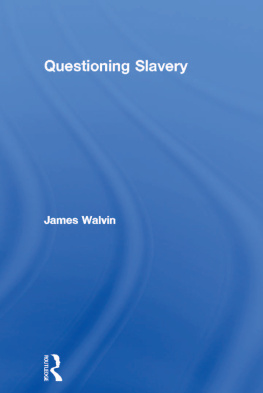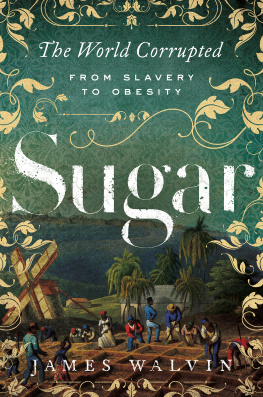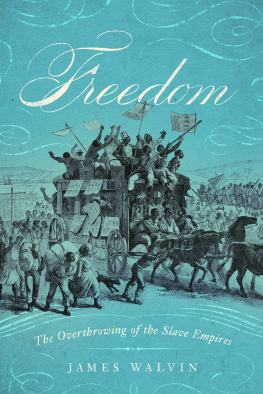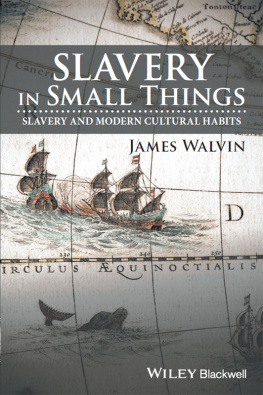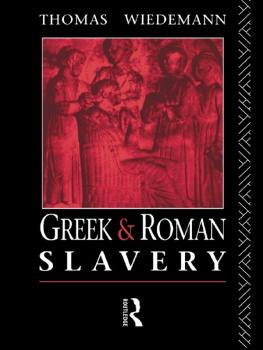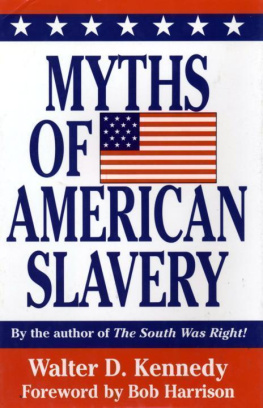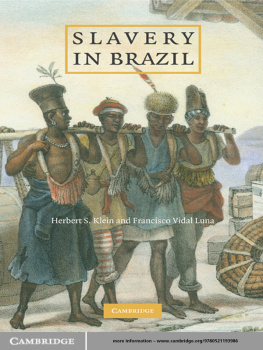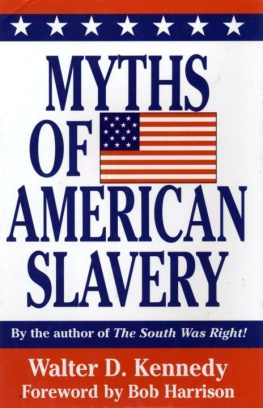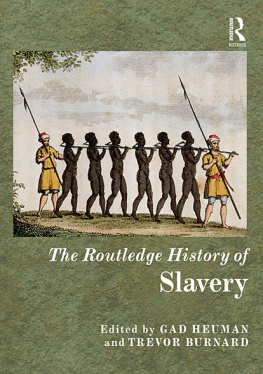Questioning Slavery
By teasing apart the history of slavery into its major components, and by examining those themes that recent historians have brought to the fore, this book makes sense of what has become a confused and confusing historical debate.
Each chapter offers a guide to the most recent scholarship. The themes chosenrace, gender, resistance, domination and control are those that currently engage the attention of the most innovative scholars in a range of disciplines. The comparative analysis on slavery throughout the English-speaking Americas gives new perspectives on the phenomenon.
Written in a clear and lively style, Questioning Slavery is an upto-date guide to slavery, to black historical experience and to on-going historical debates.
James Walvin is Professor of History at the University of York. He is a leading authority on the history of slavery and has published extensively. His latest books include Slaves and Slavery: The British Colonial Experience (1992) and Black Ivory: A History of British Slavery (1992).
Questioning Slavery
James Walvin
London and New York
First published 1996
by Routledge
11 New Fetter Lane, London EC4P 4EE
This edition published in the Taylor & Francis e-Library, 2003.
Simultaneously published in the USA and Canada
by Routledge
29 West 35th Street, New York, NY 10001
1996 James Walvin
All rights reserved. No part of this book may be reprinted or reproduced or utilized in any form or by any electronic, mechanical, or other means, now known or hereafter invented, including photocopying and recording, or in any information storage or retrieval ststem, without permission in writing from the publishers.
British Library Cataloguing in Publication Data
A catalogue record for this book is available from the British Library
Library of Congress Cataloguing in Publication Data
Walvin, James.
Questioning slavery/James Walvin.
p. cm.
Includes bibliographical references and index.
1. SlaveryGreat BritainColoniesHistory. 2. Slave trade
Great BritainHistory. I. Title.
HT1165.W346 1996
306.3620942dc20
9614794
CIP
ISBN 0-203-44287-3 Master e-book ISBN
ISBN 0-203-75111-6 (Adobe eReader Format)
ISBN 0-415-15356-5 (hbk)
ISBN 0-415-15357-3 (pbk)
Contents
For the best part of three centuries the development and well-being of the English-speaking world (on both sides of the Atlantic) was inextricably linked to the rise and progress of black slavery. Research since World War II (but especially over the past generation) has confirmed the centrality of slavery in the development of the Atlantic system. But if any simple conclusion has emerged from recent findings on slavery it is that slavery in the Americas was quite different from other forms of slavery (then or earlier). In addition, it is now clear that, for all their superficial similarities, there were enormous differences between the various American slave societies.
What this book seeks to do is, in effect, to pick a path through the scholarly thickets. It is concerned with those forms of slavery That said, the focus of this book is simple enough: the English-speaking settlements of the Americas.
It is important to explain, from the start, what this book does not try to do. It is not a comprehensive history of slavery. For students interested in recent narrative accounts of slavery in the English-speaking world, three books spring to mind. This books aim, on the other hand, is altogether simpler.
In trying to make sense of a generations scholarship, I have adopted a thematic approach. This inevitably involves a degree of artificial ordering and arrangement of the material. To slice up the confusions of the past (and the scholarly confusions of the present) into neatly packaged themes is, of course, to create artificial structures. The study of slavery is at once more confusing, more adversarial and disputativeindeed, more in doubtthan this book might sometimes suggest. Beneath the (sometimes) rather bland generalizations there occasionally bubbles an intellectual conflict. I have tried to approach the topic by asking questions of slavery in the hope that those questions will prompt replies. Each chapter tries to confront one of the main questions or problems which have attracted scholarly attention over the past twenty-five years or so. This is not, however, a historiographical book, but it has been shaped by my own reading of and engagement with the writings of other historians.
There is a tendency to imagine that slavery is necessarily black. Curiously, the massive scholarly output in recent years has served to compound the impression that slavery is best represented (and certainly best known) by the slave systems of the Americas. Of course, no serious historian would openly make such claims and would point, instead, to the ubiquity of slave cultures in greatly different periods and regions. But it is undoubtedly true that the Moreover, the transformation of slave history into popular cultural format has also lent strength to the feeling that because slavery was black it was necessarily racial. As we shall see, this is not the case. It is also true that without slaverywithout those Africans shipped into the Americasthe course of modern racial thinking would have been utterly different. We will then need to return to the complex question of slavery and race, not simply in its historical setting, but in the links forged between history and modern racism.
Naturally enough, what follows is very much my book. Most of the time it may reflect a broad consensus of opinion among contemporary slave historians. But I do not expect everyone to agree with all the questions I askor with the emergent answers. To that extent, the book is offered as part summary of, part contribution to, the continuing debate about the history of slavery in the English-speaking world.
One colleague in particular, Alan Forrest, deserves special mention for helping me with this book, for he has frequently gone out of his way to enable me to pursue the interests which have found their way into this study. Many of the ideas which follow were first aired in my teaching at the University of York. There, my students have, by turns, been critical and informative. Parts of the book were discusssed in seminars and lectures at York, at Flinders University, Australia, at the University of Toronto, the Victorian Studies Association of Ontario, the University of Edinburgh and at meetings of the Association of Caribbean Historians in Jamaica and Puerto Rico. Above all else, however, it was in the Library Company of Philadelphia and the Historical Society of Pennsylvania that the book took its final shape. There, I was fortunate enough to hold a Barra Fellowship and was greatly helped by a group of wonderfully attentive librarians. I hope others do not take it amiss if I single out Phil Lapsansky for praise and thanks. He steered me towards sources and books I did not know about and generally acted as my mentor and guideoften above the call of duty. In Philadelphia, Rod McDonald was a patient host who made me feel at home. Once again Gad Heuman took time out from his own work to discuss my work. I am most grateful to the publishers anonymous reviewer whose helpful remarks greatly improved this text. In this book, more than in others, I am very conscious of how much I am indebted to other historians working in the field.

